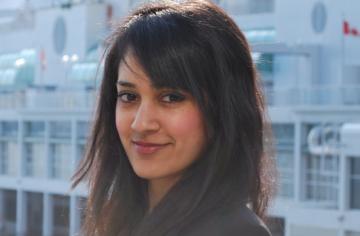Grad finds Victorian annuals precursor to Vogue, Cosmo
- Karolina Karas

Writing a master’s essay is stressful enough, but imagine presenting it halfway across the world in front of professors and academic experts in the field. This is one of the highlights for graduate student Sonu Purhar, who presented her essay, “The Age of the Annuals: Marketing Tactics in Victorian Print Culture,” at UVic, UBC and in Glasgow for the British Association for Victorian Studies Conference.
Purhar, a 26-year-old Vancouver native, did her undergraduate studies in both English and psychology at Simon Fraser University before attending UVic for graduate school.
“When I was ten years old, I thought I was going to be a psychologist,” Purhar says. “That’s why I did the double major at SFU. But I love English, and I wanted English to be a part of my life.”
It was this desire that led Purhar to UVic to do her MA in English. Here she took a class on 19th-century periodicals that eventually inspired her graduating essay.
“I had never heard of annuals before or seen them,” Purhar admits. “But to actually look through historical documents from the 19th century really turned me on to learning more about them.”
“I was basically looking at the history of the annuals in Britain, which were one of the forerunners of the periodicals and magazines we have today,” she says.
In her research, Purhar found similarities between today’s magazine industry and the annuals, including celebrity status, sensuality and sex appeal.
Her focus was on early Victorian annuals, enormously popular magazines that were often derided as trashy by contemporary reviewers but that earned big money for their publishers and big celebrity for their editors, who were primarily women. She analysed the marketing prowess of a particularly entrepreneurial editor, Lady Blessington, who used her writing skill and glamorous lifestyle to market two of the longest-running annuals.
“I definitely enjoyed being able to take the physical relic from the 19th century, to touch it and look through it. I think it’s really cool, holding something that someone from back then held,” she says.
Purhar did most of her research at UVic, but also used SFU’s special collections room and online research.
After finishing her studies at UVic, Purhar went back to Vancouver where she is currently working at her “dream job” in international relations at Tourism Vancouver.
“I’m really lucky to be working there,” she says. “It’s the best of everything I enjoy doing. I get to meet with people from all around the world.”

